Ever wondered how you could become an Aquanatal Yoga teacher?
Read on to find out more about what Birthlight Aquanatal Yoga is and tips to consider if you’re thinking about training to become an Aquanatal Yoga teacher. Aquanatal Yoga offers unique and wonderful benefits during pregnancy that are different to aqua natal fitness classes and different to prenatal yoga on dry land. It may also be called Aqua Yoga for Pregnancy or Prenatal Aqua Yoga. Aquanatal Yoga is a unique synthesis harnessing the distinctive qualities of being in water with yoga principles, breathing exercises, movement and some recognisable yoga poses. For many, this combination makes Aquanatal Yoga very accessible wherever they are in their pregnancy and whatever their level of fitness.
Aside from the benefits of remaining active during pregnancy or getting more active, exercising in water supports all the joints of the body. This is especially useful around the hips, lower back and pelvis as these are areas which can be sore and achy during pregnancy. The water supports the weight of your growing baby bump and takes the pressure off. Hydrostatic pressure in water means we can work muscle chains gently but effectively without strain. It can be surprising to feel like you’ve worked all your muscles after an Aquanatal Yoga session even though it didn’t feel like hard work whilst you were in the pool.
Many people feel less self-conscious in water and find the sessions reduce their stress levels helping them relax more easily. They also enjoy practising and connecting with the others in the class also going through pregnancy. It is also special allocated time to connect with themselves, their pregnancy and their baby.
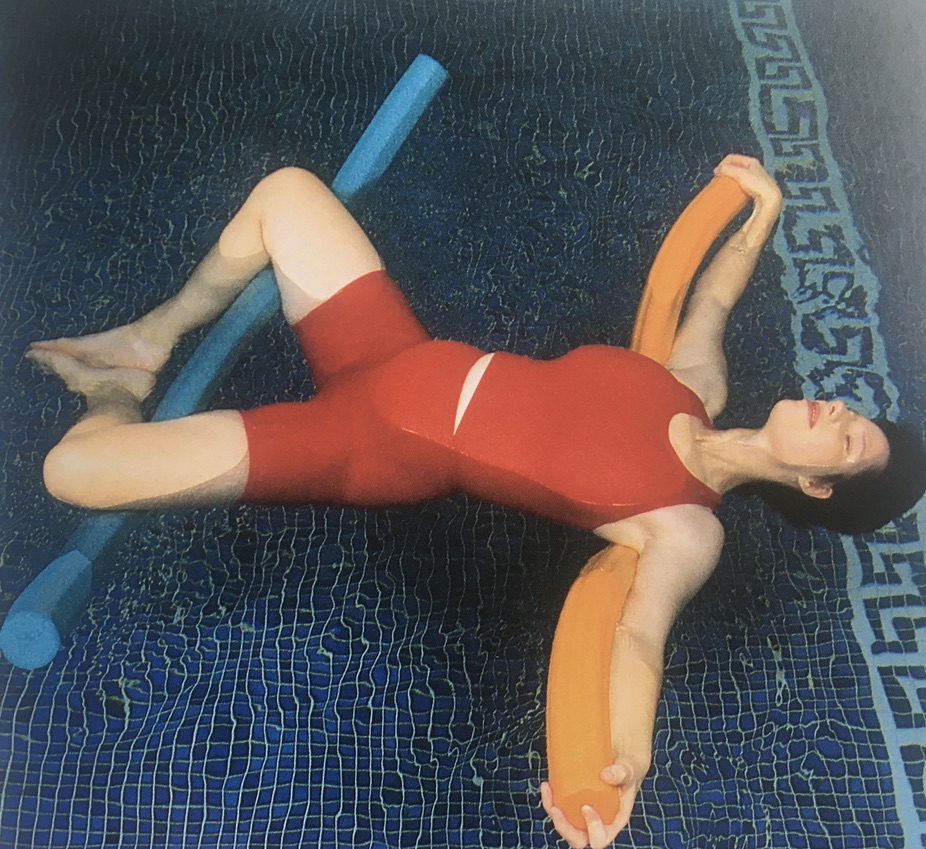
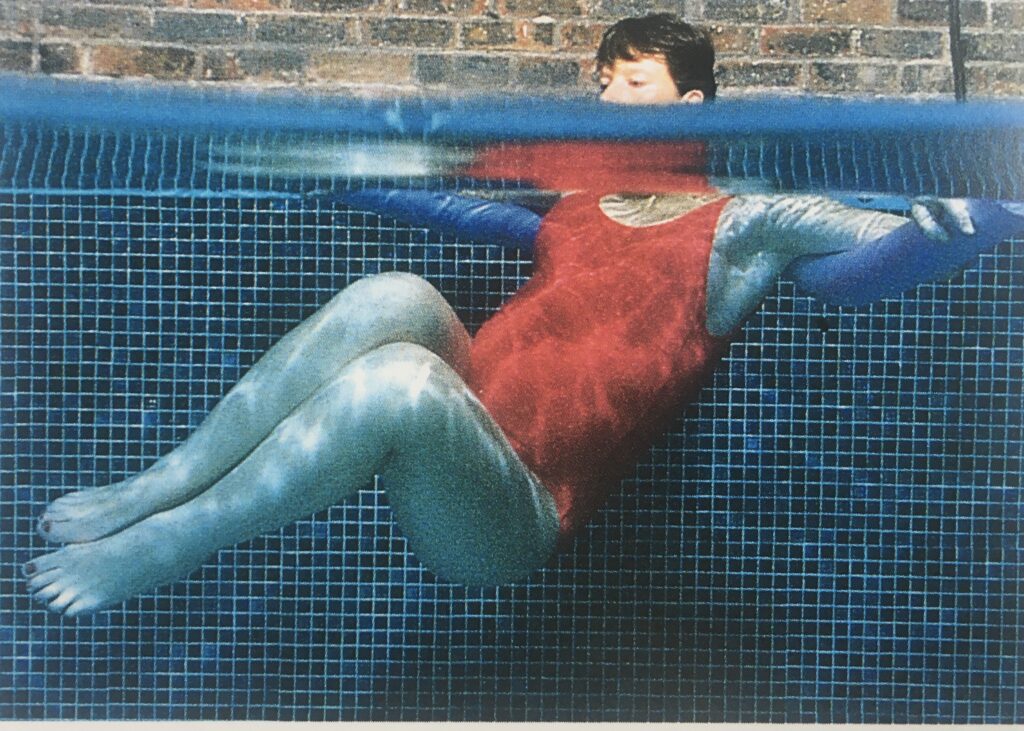
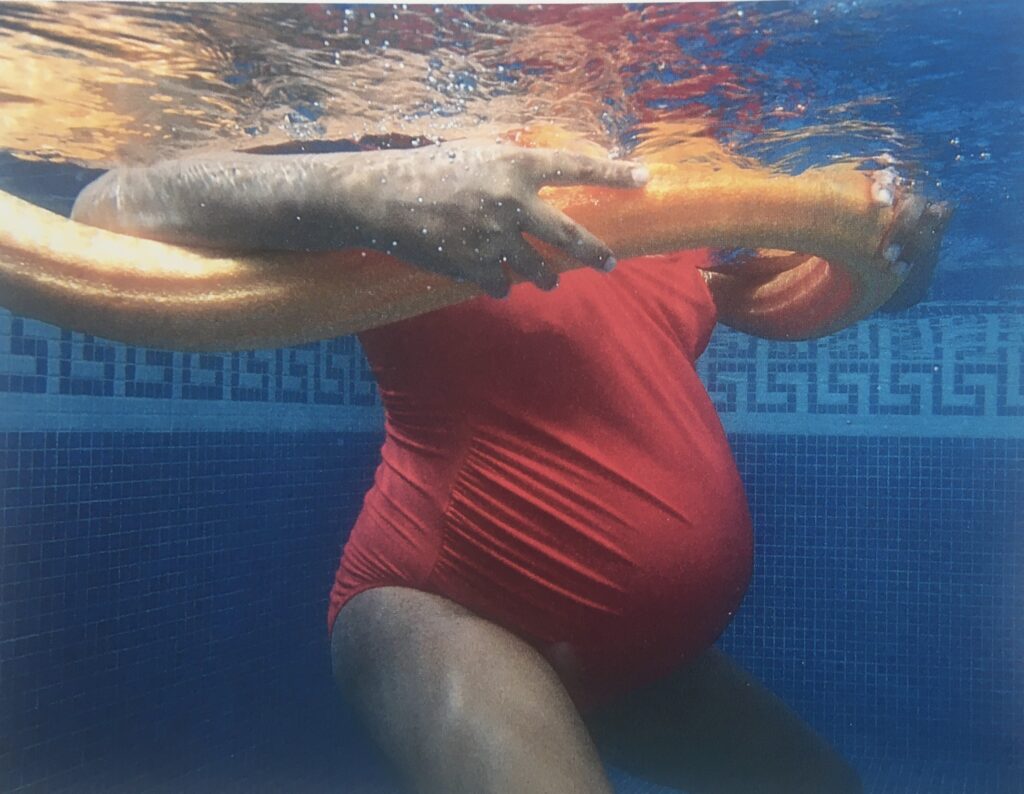
So what is it like teaching an Aquanatal Yoga class?
As an Aquanatal Yoga instructor, you begin each class by reviewing any new enrolment forms submitted by participants, which help you understand any symptoms or medical issues they may have, along with any private concerns they wish to share. This means you know how to look after the individual women in the group, who has back pain or Pelvic Girdle Pain for example.
Classes usually take place in a warm pool where participants can comfortably stand with their feet touching the bottom. When pool temperatures are slightly cooler, you advise wearing a t-shirt or rash vest for additional warmth. You’re in the water with the group throughout the class.
Each session starts with a brief check-in. which also provides an opportunity for you and participants to learn everyones’s names.You ask how everyone is feeling and whether there are any new developments you should consider during the class so you can offer alternative ways of doing things where needed. You begin with warm-up exercises standing in a circle, which also provides an opportunity for participants to learn each other’s names.
You then guide the class flowing through breathing practices and physical exercises, often utilizing floats and woggles of various sizes for support. Some exercises use the pool wall, while others are performed statically. Many activities involve movement around the pool, combining steps, glides, turns, floating rotations, and adapted swimming strokes. You offer encouragement, options and verbal adjustments to help everyone get the most out of the class.
The session winds down with a floating relaxation where participants are fully supported by woggles, this is often their favourite part of the class! You help the women position their woggles and make sure they don’t bump into each other. If it’s possible in your venue you may dim the lights and maybe play some relaxing music. The class finishes with a final short practice in a circle and a group farewell. You always make yourself available to answer questions and offer advice to those who may be anxious about being in water or experiencing new pregnancy symptoms.
Of course they won’t be pregnant forever but you will enjoy hearing about the arrival of their babies and if they used anything from your class to help them with the labour.
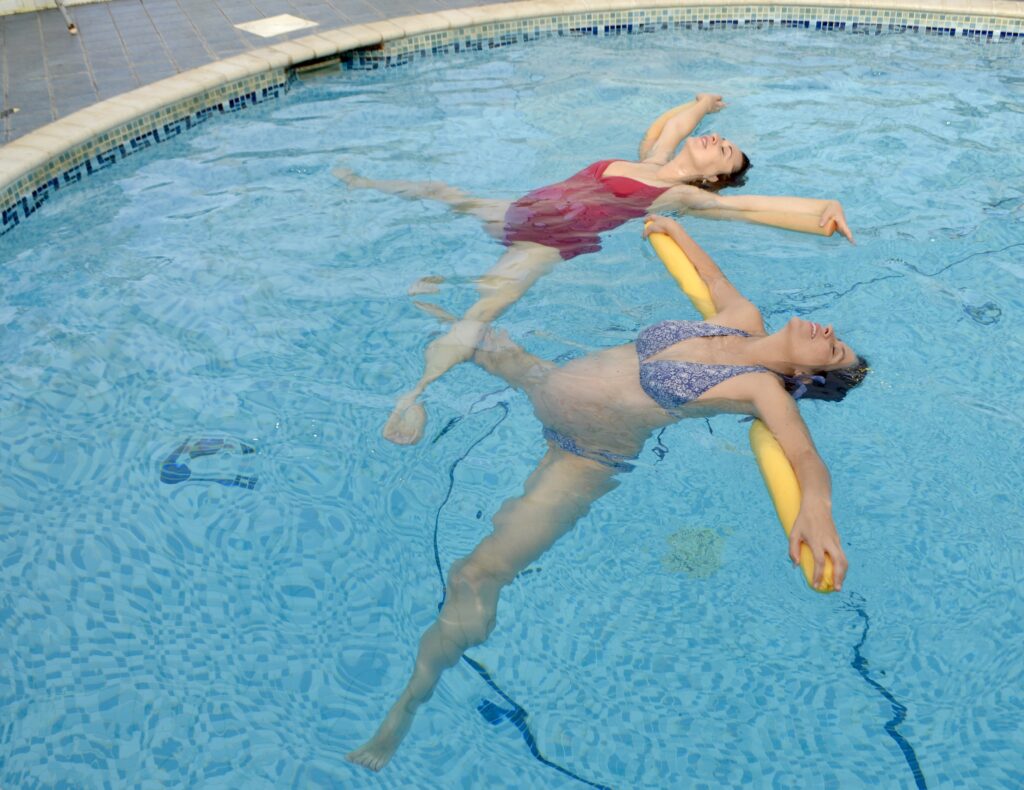
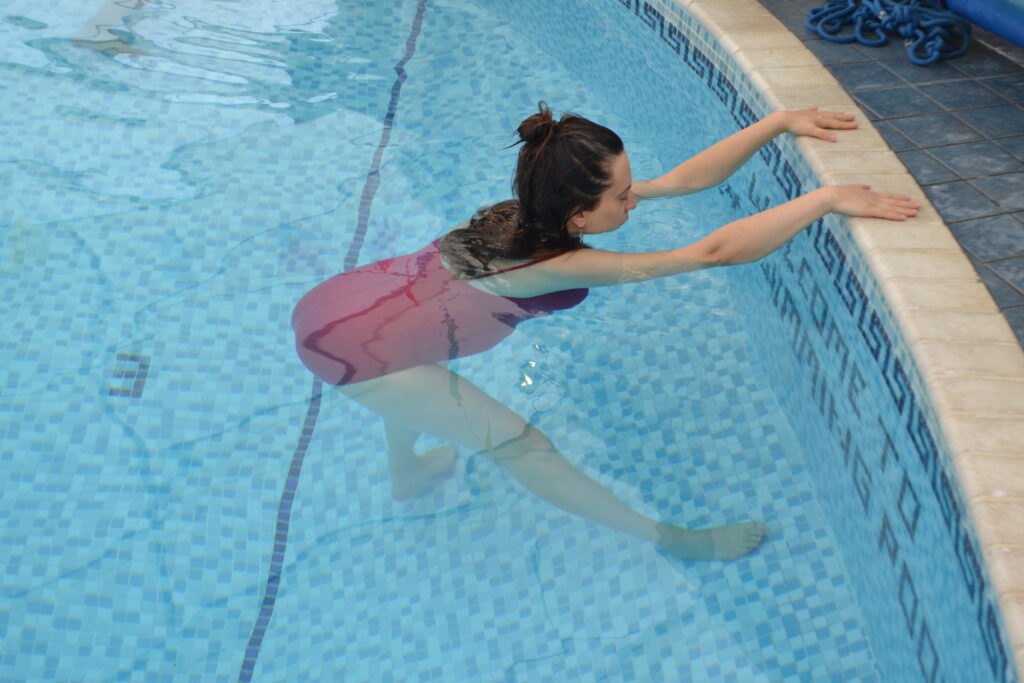
If you are a Pregnancy Yoga teacher and have a love of water or swimming…
Maybe you’d like to combine your yoga knowledge with the qualities of water and create new sequences in a new medium where you can add practices that are impossible on land.
If you are a midwife…
Maybe you would like to offer sessions that are accessible to more women whatever their fitness levels, who might not consider going to a prenatal yoga class. These sessions can help women get active in pregnancy, reduce stress and gain confidence in the lead up to birth.
If you are a physiotherapist with an interest or speciality in women’s health..
Maybe you’d like to expand your skillset and offer sessions that combine your skills with yoga and water to help all women enjoy their pregnancy more whilst being active, whether that be in group or 1:1 sessions.
If you’re a swim teacher or baby swimming teacher…
Maybe you’d like to gain a new teaching skill and encourage mums-to-be to your pool before they bring their baby along for sessions. Mums enjoying the water during pregnancy will naturally pass this on to their baby.
If you’re another professional working in water with pregnant women…
You may wish to add another element to your therapeutic repertoire or a new type of session to offer in 1:1s or groups.
Frequently asked questions…
- How long is an Aquanatal Yoga class?
Anything from 30-50mins depending on your pool temperature and how long you choose to have for the final relaxation.
- How many women can be in an Aquanatal Yoga class?
It depends on the size of the pool. You need enough space for everyone to be able to move around the pool rather than being static on one spot and enough space for their whole body to be floating with noodle supports and no be bumping into other people. Many practices are often done or at least started in a circle, not rows.
- What is included in an Aquanatal Yoga session?
Classes can be designed around the needs of the women in your class, where they are in their pregnancy and any pregnancy symptoms they may be having. You can teach group or individual sessions. On this training you will learn how to adapt practices and add ones that can help alleviate common pregnancy symptoms. Classes typically include a welcome to all, warm -ups, practices using the pool wall, various practices with and without floats or noodles with feet on the pool floor or not, adapted swimming strokes, breathing practices, sometimes some partner practices and always relaxation.
- Would I be teaching from the poolside or in the pool?
Aquanatal Yoga is taught with the instructor in the pool with the women, often in a circle. This is so you can properly demonstrate how to use the noodles and floats for the movements and help place them for relaxation. It also creates a friendly caring atmosphere in the class where you’ll be directly on hand if they need help or more explanation.
- Where can I teach Aquanatal classes?
In a pool with a depth of around 1.2 -1.4 metres. The attendees should be able to get their shoulders comfortably under the water without kneeling. While we can do Aqua Yoga in a shallow pool it is not ideal as it is most effective when more of the body is immersed to the chest or neck, without having kneel or bend the knees a lot. A warm pool is ideal for enjoyable longer supported floating relaxation. The temperature ideally needs to be between 30 to 33 degrees. It is possible to have sessions in a slightly cooler pool and the course covers how to adapt the class format for a cooler pool. A flat pool floor is preferable to a sloping one. Having steps rather than a ladder to ender the pool will make it accessible for those further on in their pregnancy where they are restricted in their movement by the size of their baby bump. Think about how many people would fit for a floating relaxation fully supported by woggles.
Leisure centres and hospitals sometimes have therapy pools which are a good temperature, usually wherever baby swimming classes take place will have a warm pool. You can also try private health clubs and special needs schools.
- What about water safety? Do I need to be a lifeguard?
It depends on what the protocol is where you will be teaching and if a lifeguard will be present whilst you are teaching. This is something you should find out when you are looking for a venue to teach at. In any case we strongly recommend that you complete a NRASTC (National Rescue Award for Swimming Teachers and Coaches).
- Do I need to be a Yoga Teacher?
No. You do need to have some personal experience and practice of yoga and an interest in it though, in order to be able to teach these classes.
- Do I need a swimming qualification to take this course?
No. However you do need a love of being in water! Everyone taking this course does need to be a confident swimmer, but you don’t need any swimming awards. Whilst the sessions take place in pools where you can have your feet on the bottom of the pool, we teach lots of practices, including adapted swimming strokes, where your feet are not on the bottom. Whilst some practices where you put your face in the water will be optional for the women taking these sessions you will need to demonstrate them.
- What about insurance?
You’ll need to check with your current insurer or your professional body if you’re already working in water. If you’re coming from a Yoga Teacher background, you’ll need to add this discipline to your insurance and we recommend that you look at BGi to compare policies and cover. If you come from a midwifery background or a doula background, again check with your current insurance. If your your workplace covers your insurance remember you will not be covered to teach independently.
- Can I start teaching straight after the course?
Yes, planning, teaching and documenting 4 case study classes forms part of your coursework to complete your training and receive your full qualification. On successful completion of the live online and pool days you’ll be issued with a Certificate of Attendance valid for 6 months whilst you complete your coursework, this can be used for insurance for teaching your case study classes. Extensions may be given up to 12 months from your training days. Once your tutor has assessed all your coursework and passed you, you will then receive your full teaching certification.
- How is the course assessed?
The course is partly assessed by your tutor throughout the live online and in person days at the pool, to make sure that you can demonstrate the practices effectively and understand the theory. The other part is assessed on the coursework you submit. The coursework is carefully read and commented on by your tutor to make sure we are confident in your abilities to teach safely and effectively and to give you guidance on how to further your skills and understanding. All elements of the coursework must be submitted in order to graduate.
- Are there adjustments to the coursework for people with dyslexia or any other need that makes completing written coursework difficult?
Any adjustment should be discussed and agreed before you enrol on the course. We endeavour to support in the best way we can although sometimes we lack the resources to do so. Please contact us on 073575968711 or email: [email protected] if you have any questions.